- Thống kê truy cập:
- Online :
BIOGRAPHY OF DOCTOR A.YERSIN

Alexandre Emile John Yersin
(1863 - 1943)
French - Swiss
Alexandre Emile John Yersin was born on 22 September 1863 in eastern Vaud, in the county of Lavaux, in the province of Morges, Switzerland.
Yersin is the youngest of three children whose mother is French and his father is Swiss.

At the age of 15, A. Yersin has a tendency toward natural science, especially for collecting insects. Yersin's scientific career later marked the beginning of his childhood hobby.
Education
After graduating from high school, in 1883 Yersin went to Lausanne to study medicine, then to Marburg, Germany, continuing his studies. During his stay in Marburg, Yersin read about David Livingstone, a Scottish missionary and explorer, and Livingstone became an ideal model for the much more ambitious A. Yersin.
In 1885, he went to France to study medicine at the Hotel-Dieu de Paris (Paris's oldest hospital, in association with the Department of Medicine at the University of Paris Descartes). News, travels, and maps of Indochina stirred the adventurous fascination of the medical student, who throughout his life always wanted to discover something new. In 1886, he joined Louis Pasteur's research institute at the Paris School of Education at the invitation of Emile Roux, and participated in the development of rabies prevention.
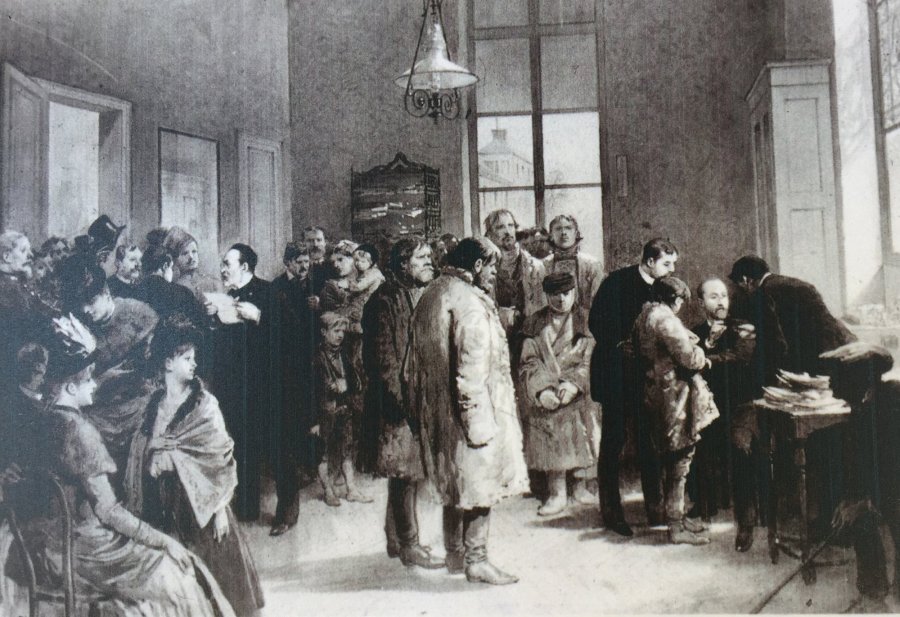
A rabies vaccination, d'Ulm Road
At the age of 25, immediately after receiving her doctorate in medicine with the thesis on Étude sur le Développement du Tubercule Expérimental, A. Yersin went to Berlin to register Technical microbiology taught by Robert Koch. Back in Paris, A.Yersin applied for French citizenship because only French citizens were allowed to practice medicine. He joined the Pasteur Institute in Paris, founded in 1889, as a collaborator with Roux, who together discovered the diphtheriae (produced by the Corynebacterium diphtheriae bacillus).
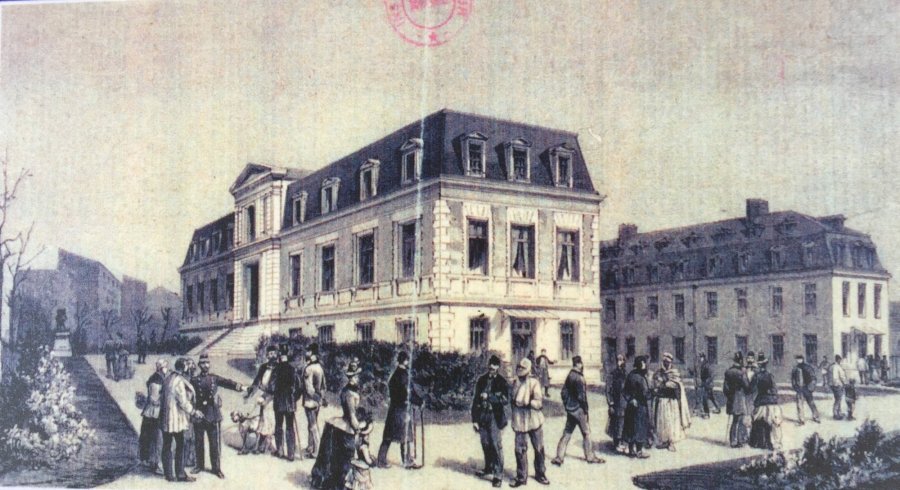
Pasteur Institute in 1890
Indochina
However, this promising young scientist is not satisfied with the high academic climate in Paris. In 1890, A. Yersin decided to leave France to go to Indochina (then French colony). Until the age of 26, A. Yersin saw the sea for the first time, then he was a young doctor was sent to work in the fishing village of Grandcamp. This experience opened the door to discovery and willingness to give up the bright future of scientific research in Paris as a follower of Louis Pasteur. A.Yersin wrote to his mother, "You will not be sad if you have to leave Paris because you are sick of drama, high society is disgusting, and life is not going to be what life is."
Knowing that it was impossible to persuade A. Yersin to stay in Paris, Louis Pasteur wrote to Messageries Maritimes, nominating A. Yersin as a doctor on board.
A.Yersin received medical care for passengers and crew on the Volga that runs the Saigon-Manila route, carrying 67 passengers and several tons of cargo. While working as a doctor on the Volga, traveling between the cities of Saigon and Manila, A. Yersin organized his own tours in the Philippines and Cochinchina, accumulating knowledge and experience exploring dreams. his new land. During this time, Albert Calmette, another pupil of Louis Pasteur, came to Saigon to meet A. Yersin proposed cooperation in efforts to found the Pasteur Institute in Saigon.
The following year, A.Yersin was transferred to the newly opened maritime route of Saigon - Hai Phong, working as a doctor on the Saigon ship loaded with half the Volga, moving along the coast. At that time, there was no road connecting the two North. Yersin spent his free time on the ship to paint the coastline and, under the guidance of the captain, learned to use glass, study geodesy, and acquire the mathematical knowledge necessary for Observation of astronomy.
Both the trip as well as the trip, the ship stops in Nha Trang, a quiet bay full of sun. Once in Nha Trang, A.Yersin was also fascinated by the wilderness with the beautiful vegetation of the land, brilliant hills on top of the cloudless clouds that never arrived, have never been drawn. map.
Explore
In 1891, A. Yersin resigned from the Messageries, decided to live in Nha Trang. He set up a wooden house in Xom Con, and opened a clinic. Mr. Yersin was the first European doctor to practice in this area.
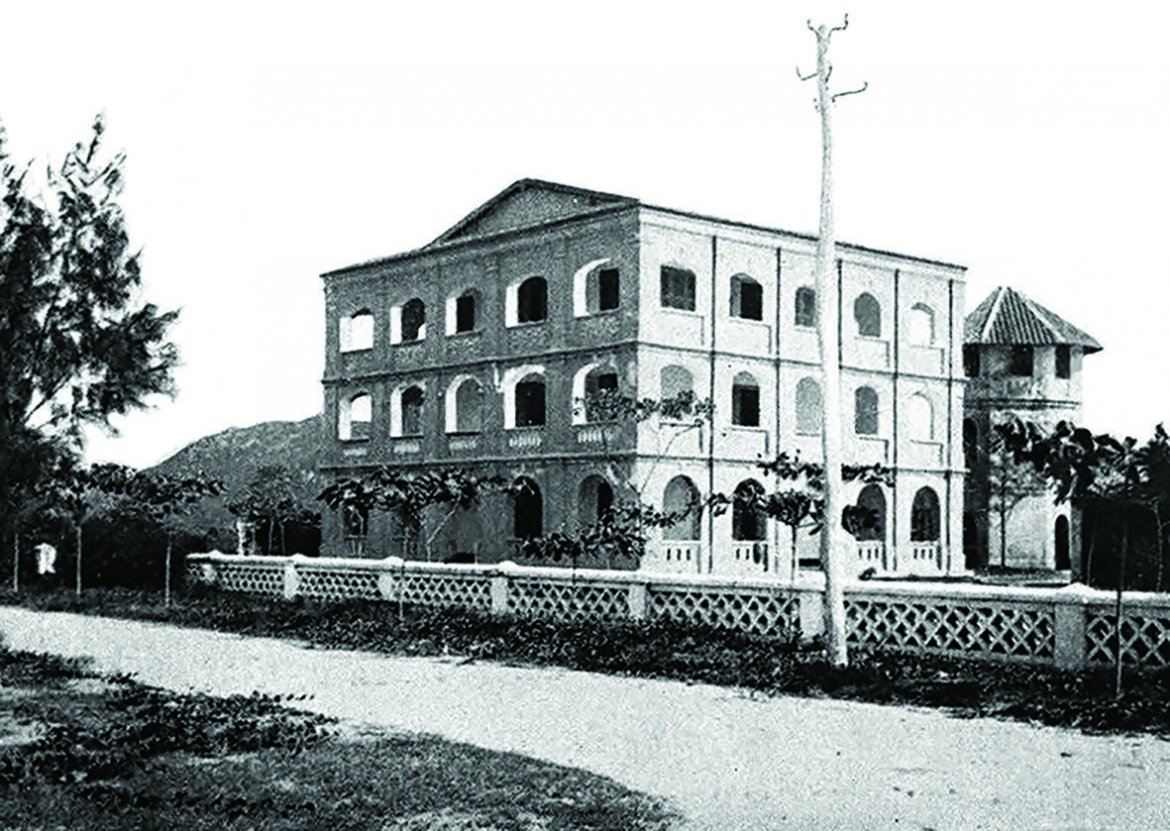
Nhà riêng của A.Yersin tại Nha Trang, nay là Nhà nghỉ Bộ Công An
Here, he cures free to the poor. He travels hundreds of kilometers in hilly areas, into ethnic minority villages, learning a few languages, hunting and treating them.
Wanting to find a road into Saigon, A.Yersin went horseback riding to Phan Ri, hired a guide to the forest, he found the Di Linh plateau, but could not go forward, must return to Phan Thiet, then take the boat back. Nha Trang. Nevertheless, A. Yersin continued to explore the mysterious mountain ranges along the Annamites, then a desolate wilderness, inhabited by minority tribes who refused to subdue the imperial court. .
With the goal of finding a road from Nha Trang to the East Sea across the Truong Son Range to the Mekong River on the other side, A. Yersin uses the remainder of the diminishing savings to buy equipment. and plan your expedition.
On September 23, 1892, the seven-member expedition, with several horses, two elephants, and a Winschester gun, led by A.Yersin, departed Nha Trang to Ninh Hoa, Ban Me Thuot.

Route 3 expeditions of A.Yersin
Three months after leaving Nha Trang, the expedition came to Stung Treng on the banks of the Mekong. A.Yersin sold horses and elephants and along with his companions on a canoe to Phnom Penh. His drawings were sent to Luang Prabang in Laos for comparison with the delegation of Pavie, and then moved to Paris. A.Yersin returned to France, stayed in Paris for three months to enroll in the Montsouris Observatory, and refused to join the Pavie Mission. Thanks to Louis Pasteur's advocacy, A. Yersin received the help of the shipping company to purchase equipment and additional expenses for the expedition.
In 1892, shortly after the first expedition, on the advice of Albert Calmette, A. Yersin joined the medical team overseas to avoid financial worries. After 28 years of service, in 1920 he retired with the rank of Army Colonel.
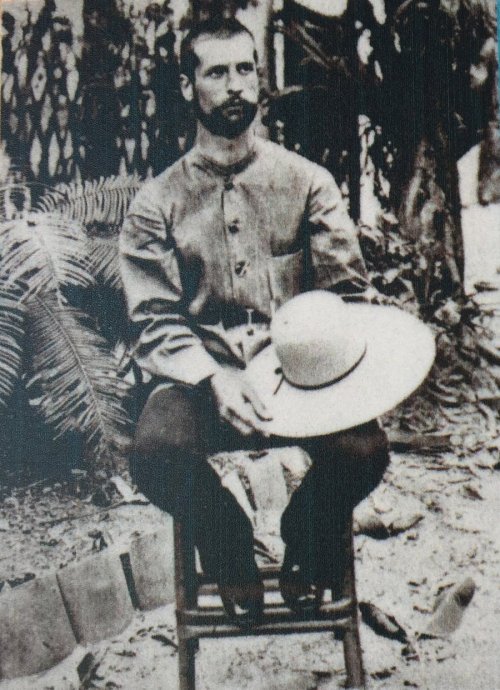
A.Yersin in 1892
In June 1893, commissioned by Governor-General of Indochina Jean-Marie de Lanessan, A. Yersin organized a road expedition from Bien Hoa to Dong Nai, to Di Linh, finally discover Lam Vien Plateau . In the diary dated June 21, 1893, A. Yersin noted that there are several villages of the D'Lat ethnicity scattered throughout the area, "From the pine forest I was stunned to face a deserted plateau. As the sea surface is full of green waves, the majesty of the Langbiang Ranges merges into the Northwest skyline, creating a magnificent setting, increasing the beauty of this land. " The land was explored by A.Yersin, Governor Paul Doumer for the establishment of a resort for Europeans, later became Dalat.
With the help of the government - provided with supplies, manpower, money and weapons - the size of the expedition was much larger than it had been in the past, sometimes with up to eighty people traveling around the canopy. leaves of the forest. In return, A. Yersin must explore new ways to develop trade, suitable locations for animal husbandry, as well as inventory of forest and mineral resources.
On the way back, when they arrived at a village of familiar minorities were robbed - about fifty prisoners escaped - burned. With the most courageous of the expedition, A.Yersin decided to pursue the bandits when they stopped, fire and inventory the spoils. A.Yersin raised his pistol, but Thuc, the captain of the bandits, jumped to the gun. Yersin grabs a jug on the leg fractured bone, was severely cut left half of the left hand, Thục pierced the spear into the chest. The bandits leave because Mr. Yersin is dead. Under the guidance of A. Yersin, the wound was widened, the spear removed, sputtering, splinting, putting him on a bamboo and forest rope, carrying for several days until Phan Rang. There was a telegram specialist for Calmette in Saigon to send the medicine. While the wounds are scarring, A. Yersin spends time figuring out how to operate the generator. Later, he was sent to Saigon, wrote reports, mapped, and sketched potential routes.
Yersin prepared for his third expedition, his longest and most ambitious voyage, with the intention of opening a new path from Central to Laos, unlike Pavie's path through Dien Bien Phu.
Before A.Yersin left the road, Thục was arrested, he witnessed the execution left many emotions.
At the end of 1893, with a powerful force - in addition to 54 entourage there was a squad carrying guns under escort. - A.Yersin depart from Bien Hoa to Da Lat, continue to the Dak Lak plateau, Attopeu in southern Laos, then east to the sea. A.Yersin arrived in Danang on May 17, 1894. This third survey explored a large area stretching from the 11th parallel in the south to the 16th parallel in the north, and from the Mekong in West to Vietnamese coast in the East. On the April 11 edition of A.Yersin's diary, "The path was terrible, for four consecutive days, we had to cross a rugged mountain range, climb down, climb, keep monotonous. It made us very tired The trees were crowded There was no trail We had to bend over the bamboo bushes Because it was raining, there was so much indescribable forest The Vietnamese came with them I had malaria even though I took the vaccine ... "
Study the plague
While A.Yersin was preparing for the fourth expedition, the epidemic broke out in southern China and spread to Indochina. In May 1894, the outbreak in Hong Kong was fatal, and became a threat to all seaports dealing with China, including Hai Phong. The colonial authorities dispatched A. Yersin to Hong Kong to study the epidemic.
On June 15, 1894, A. Yersin arrived in Hong Kong, saw dead bodies from the plague on the street, among the puddles, in the gardens, on the anchored boats. A.Yersin recorded his initial observation, "I noticed a lot of dead rats on the ground." Three days earlier, Kitasato, a Japanese physician in microbiology, came to Hong Kong to study. With the help of the British, Kitasato set up a laboratory at Kennedy Town Hospital, A. Yersin was only allowed to look at the Kitasato group. Examination of blood and careful examination of the organs of the corpse but ignoring the papilla.
Five days later, he decided to work independently. With the help of Vigano, a Italian living in Hong Kong, A. Yersin worked in a straw-covered bamboo shed and identified the cause of the disease.

Yersin and the straw-covered bamboo hut, where he found the bacillus
After the Japanese delegation left, the British wanted to keep A. Yersin in Hong Kong but he refused. Because Kitasato's initial reports are ambiguous and sometimes contradictory, many believe that A. Yersin was the only one who found the bacillus. However, a morphological analysis of what Kitasato discovered shows that "Kitasato tested the pathogenic bacillus in Hong Kong in late June and early July 1894," shortly after Yersin announced his discovery (June 20). Therefore, "can not refute the contribution" of Kitasato. It should be noted that the pathogenic bacillus develops better in low temperature environments, so A. Yersin's poorly equipped laboratory has an advantage over Kitasato.
Yersin was the first to demonstrate that the bacillus was present in diseased rats and that the patient was one, so he explained the mode of transmission. In the same year, this discovery was sent to the French Academy of Sciences by the collaborator Émile Duclaux in an article entitled La Peste Bubonique de Hong-Kong.
From 1895 to 1897, A. Yersin further studied the plague. In 1895 he returned to the Pasteur Institute in Paris and together with Emile Roux, Albert Calmette and Armand Borrel prepared the first anti-plague serum. In the same year, he returned to Indochina and set up a small laboratory in Nha Trang to produce serum (in 1905 the institute became a branch of the Pasteur Institute). In 1896, he established Suoi Dau livestock farm, raising horses to produce serum.
In 1896, A.Yersin arrived in Guangzhou, was allowed to inject serum in Nha Trang for a sick student here, and quickly obtained results. He became the first physician to save a plague patient. Yersin continues his journey against plague serology with the next destinations being Xiamen, Formosa (now Taiwan), and Macao. But when he arrived in Bombay (India), A. Yersin faced a much more complex environment - the patient refused to go to the quarantine hospital, the mice thrived because the people did not kill, He did not do anything, eventually retreating to leave a mess for Paul-Louis Simond, a colleague sent by the Pasteur Institute to replace him.

Paul Looney Simond serum injection of plague
Agriculture
After Bombay, A.Yersin decided to return to Nha Trang in 1898. With the help of Governor Doumer, he built the Nha Trang Pasteur Institute.
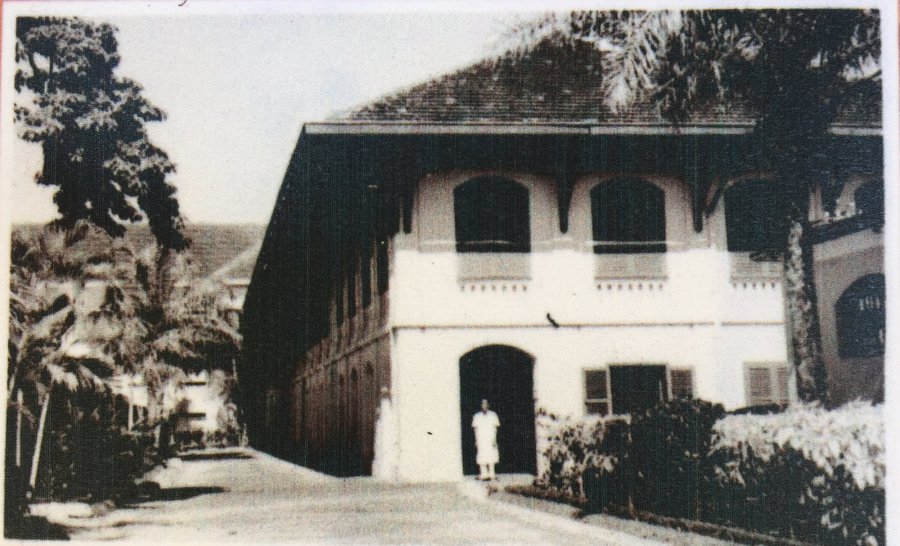
Nha Trang Pasteur Institute was built by A.Yersin in 1904

Nha Trang Pasteur Institute
Yersin bought a 500 hectare site at Suoi Giao (now Suoi Dau) for farming and livestock. He cultivates Liberia coffee, medicinal plants, coca to produce cocoa used in the pharmaceutical industry, selects many plants and animals from all over the world to grow there, Turn it into a farming and scientific community with a clinic serving residents in the area. During this period, the production of serum for cattle was the main source of income for A.Yersin. This laboratory became the first Institute of Veterinary Medicine in Indochina.
As the first person to plant a rubber plantation in Vietnam, A. Yersin became the owner of a rubber plantation that was about 100 hectares at first, making enough money to feed his institute.
Going to Nha Trang to set up a farm is the beginning of another phase in A. Yersin's life: to live in seclusion, to leave behind the glory of a living legend - a repulsive plague and a high discoverer. Nguyen Lam Vien - to live with new passion: research, agricultural practices and animal husbandry.
From Suoi Giao, after a brief expedition with Armand Krempf - two days of sailing and two days of climbing - A.Yersin discovered the Mount Hon Ba. In 1915, he conducted plant and animal passages, sow seeds, and built a Swiss-style log cabin. He studied gardening, gardening, and collecting flowers. He also launched a plantation campaign and advised the villagers to stop the burning of forest trees. He set up a poultry farm and brought about 15,000 hectares of alien birds. He experimented with cassava to produce malaria parasite. He found the soil suitable for this plant in the land of Dran (now Don Duong) and Di Linh.
Yersin used the money earned through scientific awards to build a 30 kilometer long winding road winding from Suoi Giao to Hon Ba. Thanks to this path, A. Yersin moved a generator to the bungalow, installed the lighting system, started a watering machine to irrigate the plant, and ordered from France a Citroën crawler, the same type of " the cars have crossed the Sahara. "
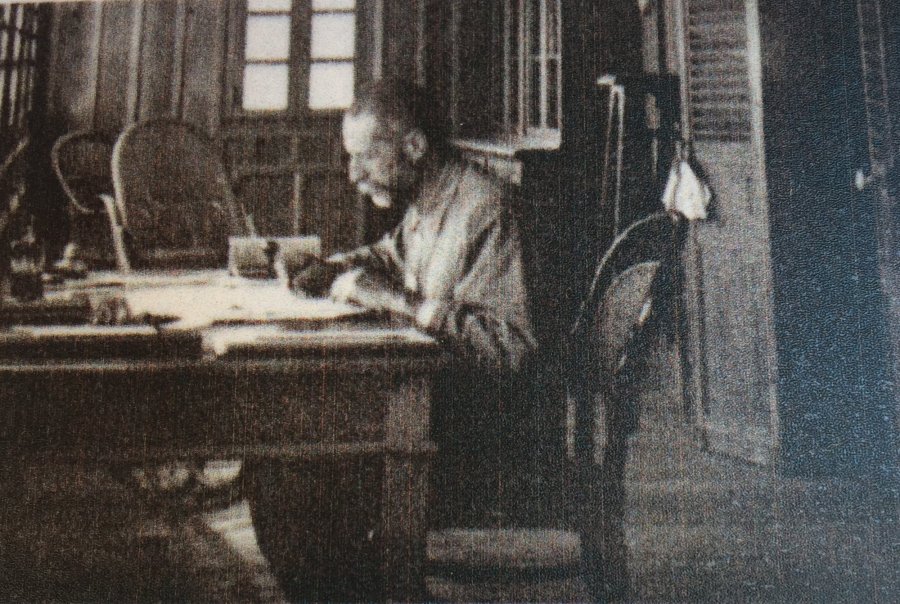
A.Yersin in his house in Hon Ba
Yersin likes to know everything, he is a specialist in tropical agronomy, microbiologist, ethnographer, photographer, meteorologist. He bought a power meter, made a huge kite drop to a height of a thousand meters to measure atmospheric electricity and predicted thunderstorms. He wants to help fishermen predict a tornado at sea. Yersin persuaded Fichot, a marine engineer to serve in the navy and was fascinated by astronomy, to live with him in the house in Xom Con with a telescope and a gondola installed on the terrace. together study meteorology.
In the last days of his life, A. Yersin stick with the new passion: Literature. At the age of eighty, he studied Latin, Greek, and translated works by Phédre, Virgile, Horace, Salluste, Cicéron, Platon, and Démosthène.
Die
On March 1, 1943, A. Yersin died at his Nha Trang residence, leaving his will, "I want to be buried at Suoi Dau. In Nha Trang, do not let anyone take me to another place, all the remaining property will be donated to the Nha Trang Pasteur Institute, and its longtime associates, the funeral process is simple, no eulogy. " Many people come to the last resting place. Many people in Ban Con and Nha Trang mourn and mourn for him. The funeral delegation is more than three kilometers long.




